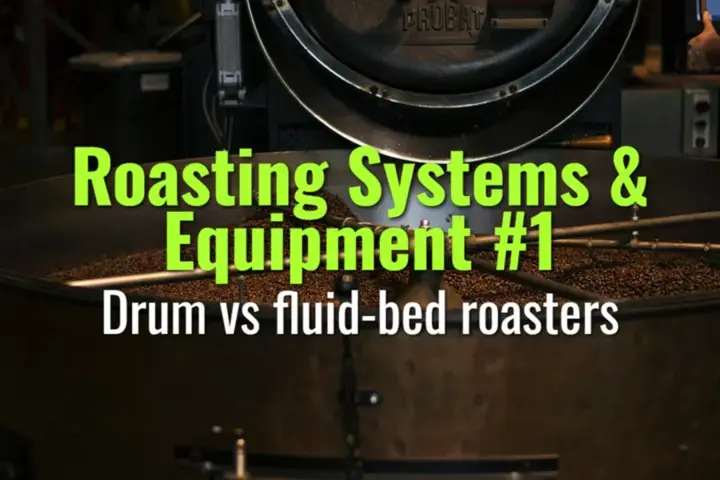Drum vs fluid-bed roasters
Understand the fundamental differences between drum and fluid-bed coffee roasters, including how each affects heat transfer, flavor development, and batch consistency.
- Coffee Basics Nerds
- 1 min read

Key Concepts
-
Drum Roasters:
-
Mechanism: Beans are roasted in a rotating drum heated by gas or electric elements.
-
Heat Transfer: Combination of conduction (bean-to-drum) and convection (hot air circulating).
-
Flavor Profile: Tend to produce fuller-bodied, more complex flavors with slower, even development.
-
Batch Size: Typically suitable for medium to large batches; more forgiving with density variations.
-
Fluid-Bed (Air) Roasters:
-
Mechanism: Beans are suspended in a hot air stream that roasts them via convection.
-
Heat Transfer: Primarily convective; very fast and uniform.
-
Flavor Profile: Bright, clean flavors with pronounced acidity; shorter roast times.
-
Batch Size: Usually small to medium; less tolerant of uneven bean size.
-
Key Differences:
Feature Drum Fluid-Bed Heat Transfer Conduction + Convection Convection only Roast Speed Moderate Fast Flavor Notes Complex, body-rich Bright, acidic Batch Flexibility Higher Lower -
Operational Considerations:
-
Drum roasters require longer preheating and more energy.
-
Fluid-bed roasters are quicker but more sensitive to environmental changes and bean characteristics.
Summary
Choosing between drum and fluid-bed roasting depends on desired flavor profiles, batch sizes, and operational preferences. Drum roasters favor depth and complexity, while fluid-bed roasters highlight clarity and acidity.